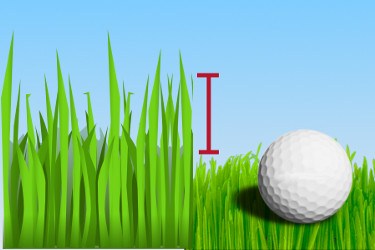
Fringe (aka Collar)
The fringe, also known as the collar, is a term in golf that refers to the strip of grass surrounding the green. It is the area between the putting surface and the fairway or rough. The fringe is typically cut slightly longer than the putting green but shorter than the fairway or rough grass, creating a distinct difference in height.
The purpose of the fringe is to provide a transitional area between the putting green and the surrounding grass areas. It acts as a buffer zone, allowing players to putt from the fringe onto the green while still having the option to chip or pitch from a slightly longer grass if preferred.
Key features of the fringe:
- Grass length: The fringe is mowed at a height that is intermediate between the putting green and the fairway or rough. This allows for smooth ball roll when putting from the fringe onto the green.
- Texture: The fringe grass is typically denser and smoother than the rough but not as tightly mown as the putting green. This provides stability and consistency for players when they putt or chip from the fringe.
- Appearance: The fringe may have a different color or texture compared to the putting green. It is often slightly darker due to the longer length of the grass and may have a different mowing pattern.
Playing from the fringe:
When a ball comes to rest on the fringe, players have several options for how to approach their next shot:
- Putting: If the ball is close to the green and the fringe is cut short enough, players can choose to putt directly from the fringe onto the putting surface. This method is often preferred when the distance between the fringe and the hole is relatively short and there are no major obstacles in the way.
- Chipping: If the ball is further away from the green or if there are obstacles such as bunkers or thick grass in between, players may opt for a chip shot. Chipping involves using a lofted club, such as a wedge, to get the ball onto the putting surface. The fringe provides a good surface for executing chip shots with control and precision.
- Pitching: If the ball is farther away from the green or if there is a significant elevation change, players may choose to pitch the ball. Pitching involves a higher, softer shot that allows the ball to land softly on the green. The fringe can act as a launching pad for pitch shots, helping players to control the trajectory and distance of the shot.
Etiquette and care:
When playing near the fringe, it is important to exercise caution to avoid damaging the fringe or the green. Here are some etiquette tips:
- Do not stand on the fringe or allow your bag to rest on it.
- Use a club or your putter to gently lift the ball from the fringe instead of scraping the grass with the club.
- Repair any divots or ball marks on the fringe to help maintain its condition.
- Respect the directional signs or markers indicating the acceptable paths from the fringe onto the green.
The fringe is a significant element of a golf course's design, and understanding how to play from it effectively can improve your overall game. It serves as a transitional area between different grass types and provides players with options for getting the ball onto the green.





